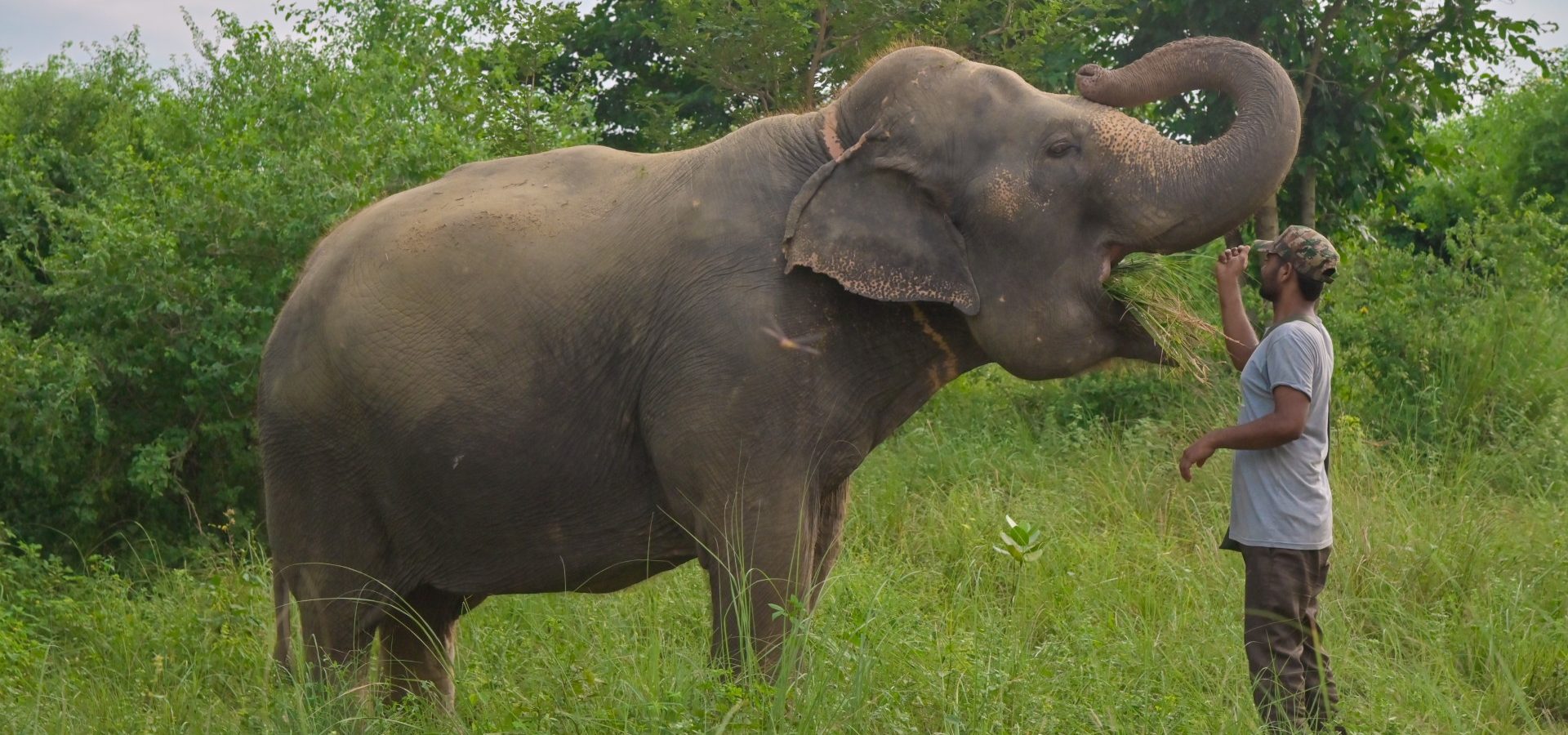The largest terrestrial mammal traversing Asia, the Asian elephant, has a diet that is as massive as its size. Interestingly, in the wild, these humongous herbivores spend two-thirds of their day foraging, consuming up to 150 kilograms of food!
Tragically, the dietary requirements of elephants in cruel captivity are gravely overlooked. Forced to beg on the streets, walk in temple processions and ride tourists, elephants under restraint seldom receive adequate nutrition or vitamins. Therefore, they are vulnerable to a host of problems like malnutrition, dehydration, digestive difficulties, vitamin deficiencies, endoparasites and ectoparasites, which take a toll on their overall well-being. Persistent skin issues, toenail complications, and challenges related to wound healing develop over time due to insufficient intake of essential nutrients.
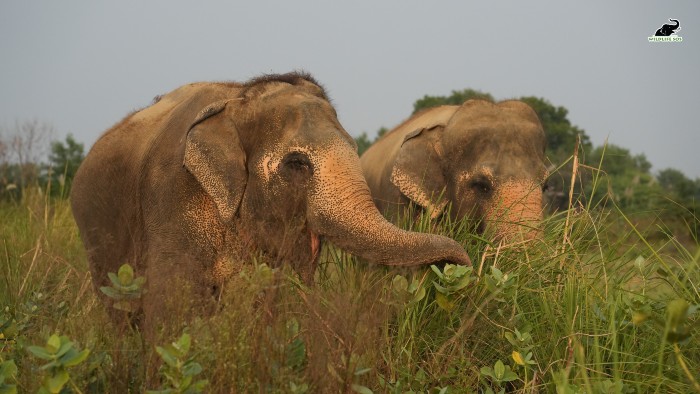
Many of the elephants rescued by Wildlife SOS arrive malnourished and dehydrated, often accompanied by prevalent gastrointestinal issues. Therefore, nutritional welfare is central to the care regimen followed for the elephants in the rehabilitation centres. According to the norms laid down by the Ministry of Environment and Forests (MoEF), the minimum feed supply for adult elephants under human care should equal to 5% of their total body weight. Therefore, a well-balanced dietary plan has been carefully formulated to suit the daily needs of rescued elephants. The resident elephants at Wildlife SOS’s centres receive an assortment of a cooked concentrate, green fodder, fruits and vegetables accompanied with daily enrichment treats.
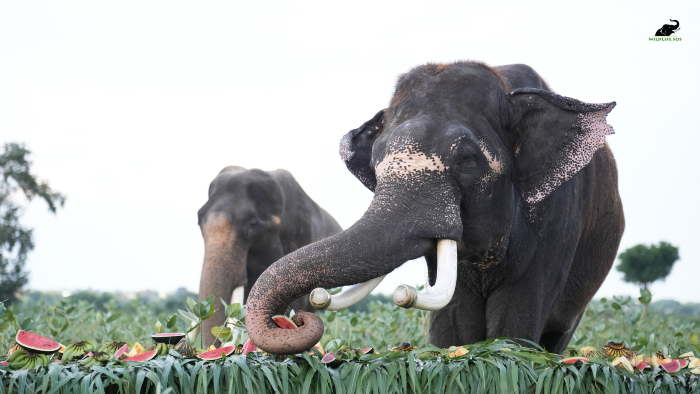
Cooked Concentrate
The elephants relish 1- 2 kgs of a freshly cooked concentrate that is made of ragi (finger millet), brown rice, horse gram and rock salt. Ragi, a widely grown cereal crop in Asia, is packed with phosphorus and calcium that are vital for strengthening bone and teeth health, and for supporting the digestive process as well. Brown rice and horse gram serve as key sources of carbohydrates and protein respectively. Additionally, jaggery and one tender coconut pulp is mixed into the concentrate as a refreshing source of hydration that is rich in nutrients.
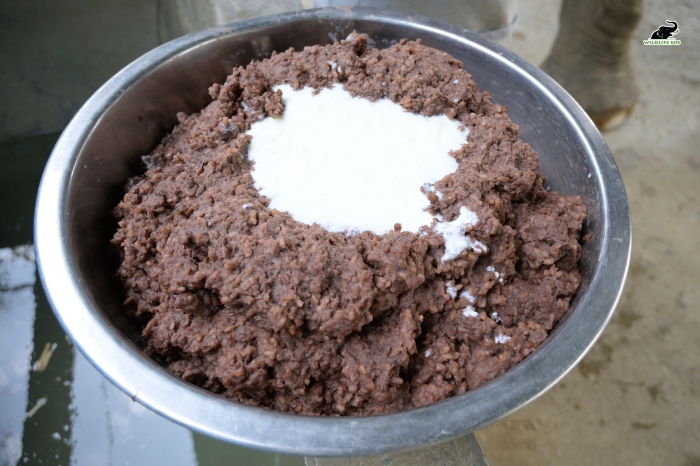
In the winter months from November to February, a winter management regime is followed at the centre, which includes modifications in the elephant diet so they can maintain internal heat in their bodies. A specialised masala, comprising spices like carom seed, black salt, asafoetida, clove, ginger, garlic and turmeric, is roasted and crushed into a powder form. An average of 100 gm of this blend is then added to the cooked concentrate of each elephant daily. The use of these natural ingredients is a part of the ethnoveterinary practices (EVP) that Wildlife SOS follows, which involves traditional methods to care for animals with the help of plants and indigenous knowledge. It contributes to the warming of elephant bodies as well as tackling their digestive issues, and has led to a positive impact on the health of the elephants.
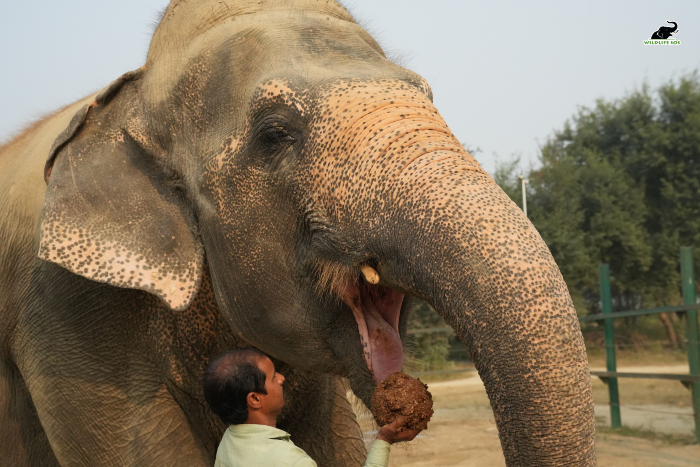
Green Fodder
As foraging herbivores, elephants mainly consume a variety of leaves, fruits, and bark. In our facilities, the elephants enjoy generous amounts of green fodder in their diet which bolsters a resilient immunity system. Depending on the size, the elephants receive between 100 – 190 kg of fodder daily that is divided equally and served in the morning and the evening.
To ensure that they receive optimal nutrition throughout the year, fodder of the season is included in their diet plan. During the summer months, chari (sorghum) and sugarcane become the fodder they consume. As the monsoon season approaches, the fodder given changes to bajra (pearl millet) and maize. In the winter months, stalks of sugarcane make a comeback along with berseem and Napier grass.
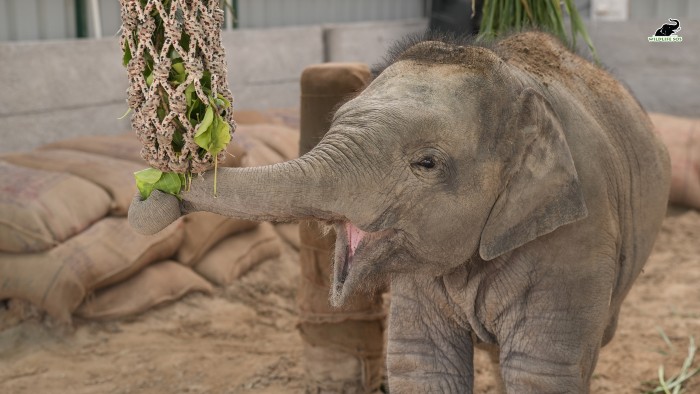
The fodder is filled inside the elephants’ food-based enrichments like feeder pipes, hanging nets and feeder cages as well. As the elephants skilfully use their trunks to procure food, it allows the stimulation of behaviours that are natural and instinctive to them. This practice not only provides fibrous nutrients to the elephants but also keeps their mental and physical health on track.
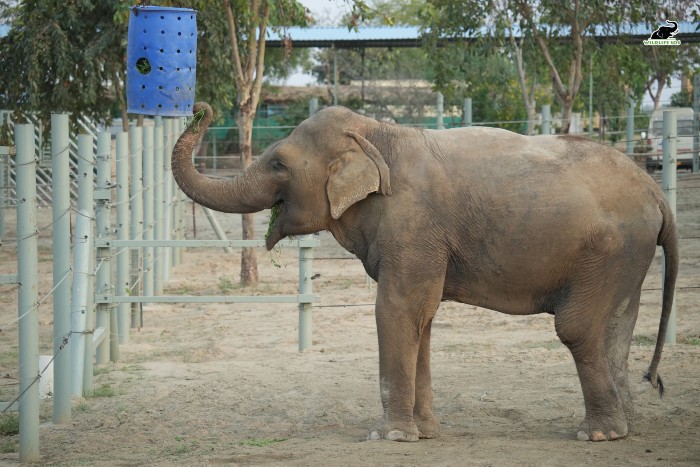
With the highly praised cognitive abilities of elephants, it is no surprise that our resident pachyderms have figured out clever shortcuts to reach their delectable goals! Using their trunks with remarkable dexterity, they untie the ropes holding up their hanging enrichments, causing tasty treats to fall all at once! This keeps caregivers on their toes to reinvent enrichments so as to challenge the inquisitive trunks of these clever giants. They also often place enrichments in a way that would sustain engagement and mental stimulation of the elephant, while also hoping that the enrichment lasts a little longer!
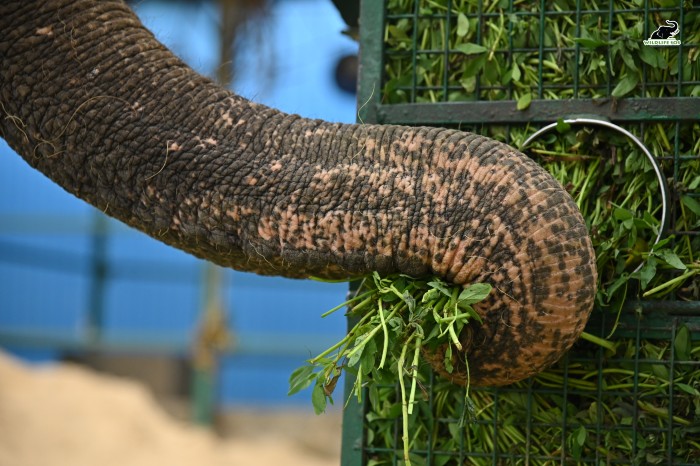
Fruits and Veggies
The gentle giants consume around 8 kg of vegetables and 2 kg of fruits which are divided into two servings every day. Fruits and vegetables are also kept ready during target training sessions as positive reinforcements to encourage pachyderms to respond to desired cues.
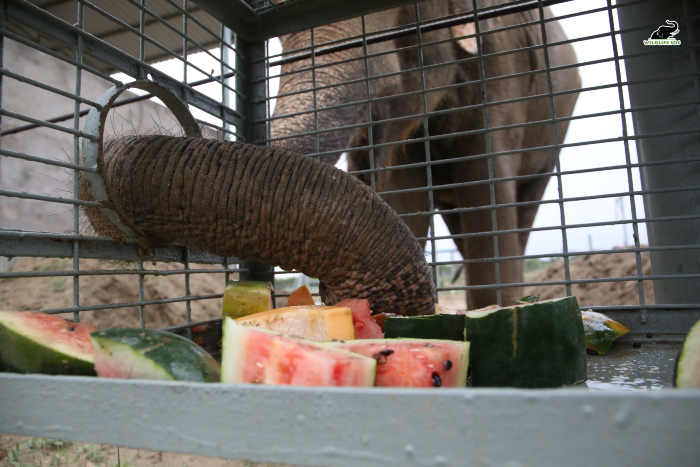
After their routine foot baths and successful completion of medical check-ups, the elephants heartily munch on 1 kg of finely chopped produce as a reward for their cooperation. Additionally, enrichments like the drum feeders are laden with dates which are rich in iron.
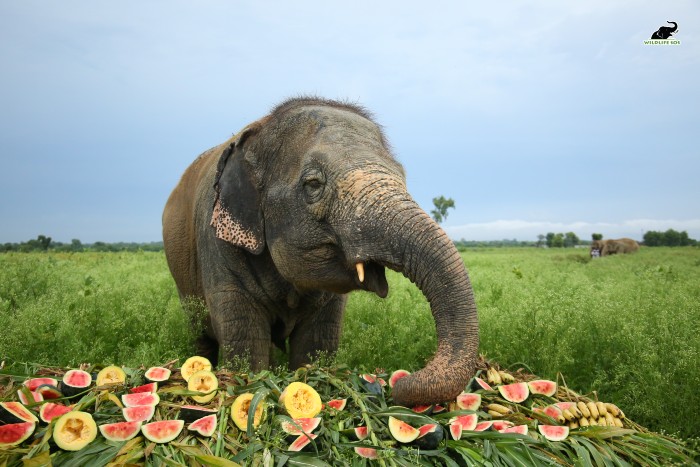
Bananas are a staple due to their year-round availability; its high potassium content improves the elephants’ gut health. Other fruits and vegetables included in their diet are apples, papayas, jackfruits, cabbage, cauliflower, sweet potatoes, spinach, and carrots. Fresh produce of these is provided to them as per the season. In hot weather, the diet of elephants tilts towards water-rich options such as watermelons, cucumbers, bottle gourds, pumpkins, beetroots, and more bananas. This is a part of the summer management regime practised by the team that pays attention to elephant hydration and health.
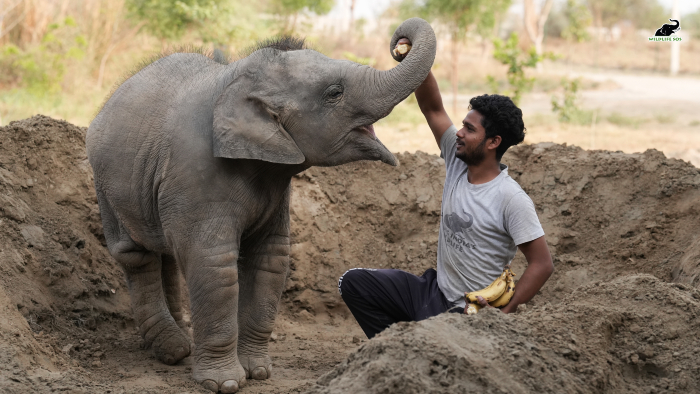
Treats!
When our resident elephants are indulged in certain activities like their routined foot baths and walks, our dedicated caregivers keep a full bag of roasted channas (black chickpeas) and peanuts handy for the pachyderms to munch on. These legumes are high in protein and contain essential amino acids that facilitate wound healing and in building body strength.
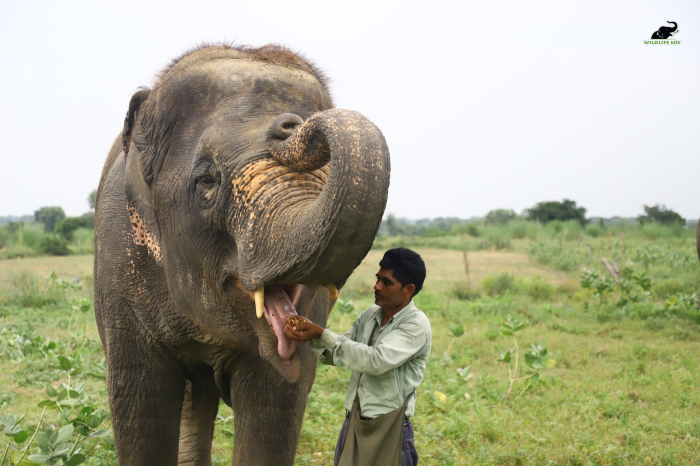
Soft food for Geriatric Elephants
As elephants age, they gradually lose their teeth, which makes chewing an increasingly difficult task. Thus, extra care is taken to ensure that geriatric elephants like Ella, Holly and Chanchal receive all the essential nutrients in a form that is easy to consume. Their green fodder intake is reduced to 50 kg, but they receive a generous portion of cooked concentrate to compensate for adequate energy. Fruits and vegetables are finely chopped and provided to the elephants so that they are soft to eat. Additionally, during the winter months, ghee (clarified butter) is added to their cooked concentrate to maintain optimal body heat.
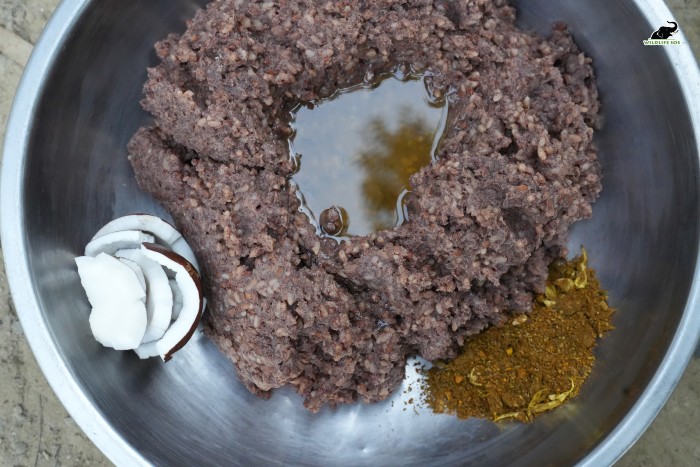
Chanchal enjoys a wholesome mixture of finely chopped fruits devoid of hard outer coverings. Furthermore, as Chanchal retains only one remaining molar, her freshly sourced green fodder is expertly chopped to facilitate easy consumption, ensuring she can still enjoy a diverse diet despite her geriatric condition.
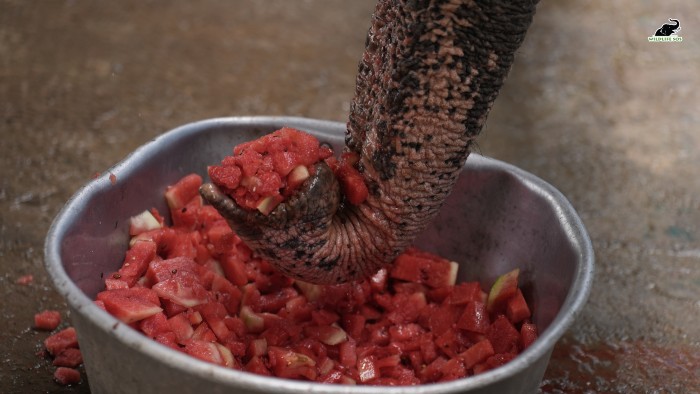
Supplements
All elephants receive mineral vitamins and supplements to support kidney and liver function. Additionally, geriatric elephants receive joint supplements to improve bone health. These supplements are mixed with their cooked concentrate for easy and seamless consumption. For elephants prone to colic sensitivity, curd is incorporated into their diet.
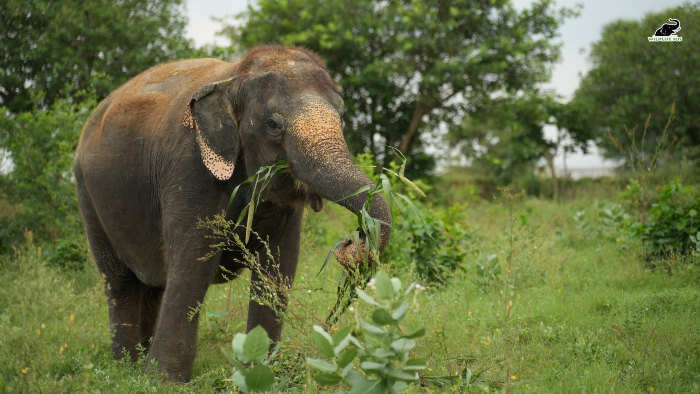
Since Asian elephants in the wild have an endless buffet of green, the Wildlife SOS rescue facilities make sure to provide the pachyderms with a diet that includes adequate amounts of energy to sustain their large appetite. Whether they’re enjoying a leisurely stroll or a refreshing swim, we make sure our beloved residents remain well-fed throughout the day.
Good health is a fundamental need for all living beings. Wildlife SOS invites you to stand by our mission to provide the best nutritional welfare for elephants by making a donation here.

